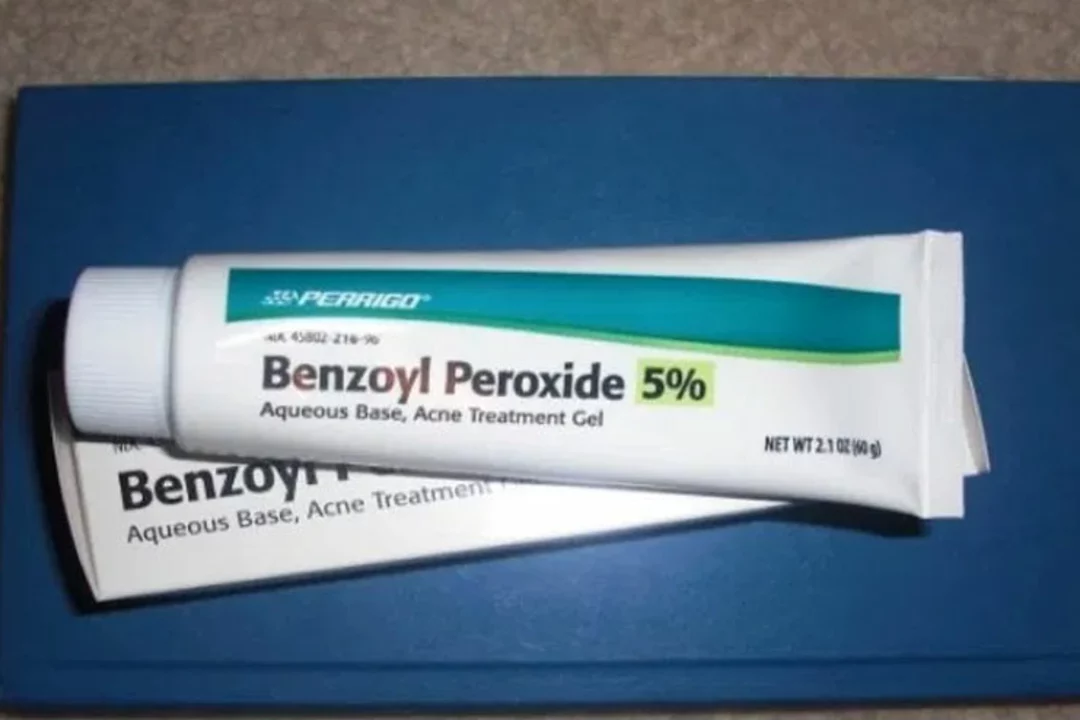Introduction to Benzoyl Peroxide and Sensitive Skin
As someone with sensitive skin, I know how challenging it can be to find effective skincare products that don't cause irritation, redness, or breakouts. One such product that often causes concern for those with sensitive skin is benzoyl peroxide, a popular ingredient in acne treatments. In this article, I will share my tips for safely using benzoyl peroxide on sensitive skin, along with some alternative options for managing acne. So, let's dive into the world of benzoyl peroxide and learn how to safely use it on sensitive skin!
Understanding Benzoyl Peroxide and Its Uses
Benzoyl peroxide is a topical medication commonly used to treat acne by killing bacteria and reducing inflammation. It works by breaking down into benzoic acid and oxygen, which then work to destroy acne-causing bacteria and clear blocked pores. This powerful ingredient can be found in various over-the-counter acne treatments, such as creams, gels, and cleansers, as well as in prescription-strength formulations.
While benzoyl peroxide is effective in treating acne, it can also be potentially irritating for those with sensitive skin. This is because the ingredient can cause dryness, redness, and peeling, especially when used in higher concentrations or more frequently than recommended. For this reason, it is crucial to understand how to safely use benzoyl peroxide on sensitive skin to minimize the risk of irritation and achieve the desired results.
Starting with a Low Concentration
When introducing benzoyl peroxide into your skincare routine, it is crucial to start with a low concentration, particularly if you have sensitive skin. Over-the-counter products containing benzoyl peroxide typically come in concentrations ranging from 2.5% to 10%. For sensitive skin, I recommend starting with a 2.5% concentration, as this is less likely to cause irritation than higher concentrations.
If you find that your skin tolerates the 2.5% concentration well and you need more effective acne treatment, you can gradually increase the concentration to a maximum of 5%. However, it is essential to remember that higher concentrations do not always mean more effective treatment, and they may increase the risk of irritation for those with sensitive skin.
Applying Benzoyl Peroxide Sparingly
When using benzoyl peroxide on sensitive skin, less is often more. Applying a small amount of the product to the affected areas can still effectively treat acne without causing significant irritation. To do this, I recommend using a pea-sized amount of benzoyl peroxide for each area you are treating. Gently dab the product onto the skin and allow it to absorb before moving on to the next area.
It is also essential to avoid applying benzoyl peroxide to broken or irritated skin, as this can exacerbate irritation and prolong the healing process. If you experience any stinging or burning when applying the product, discontinue use and consult your dermatologist for advice.
Using Benzoyl Peroxide as a Short Contact Therapy
For those with sensitive skin, using benzoyl peroxide as a short contact therapy can help minimize irritation while still providing effective acne treatment. Short contact therapy involves applying the product to the affected areas, allowing it to sit on the skin for a short period (usually 5-15 minutes), and then rinsing it off. This method allows the benzoyl peroxide to work on the acne-causing bacteria without remaining on the skin for an extended period, which can reduce the risk of irritation.
When using short contact therapy, it is essential to gradually increase the contact time to find the ideal duration for your skin. Start with a 5-minute contact time, and if your skin tolerates this well, increase the duration by a few minutes each time until you reach the desired results without causing irritation.
Moisturizing After Benzoyl Peroxide Application
One of the most common side effects of benzoyl peroxide is dryness, which can be particularly problematic for those with sensitive skin. To counteract this, it is essential to apply a moisturizer after using benzoyl peroxide. I recommend using a fragrance-free, non-comedogenic moisturizer to prevent further irritation and clogged pores.
Allow the benzoyl peroxide to fully absorb into your skin before applying your moisturizer, and be sure to apply it evenly across your face. This will help to ensure that your skin remains hydrated and less prone to irritation from the benzoyl peroxide treatment.
Limiting Benzoyl Peroxide Application Frequency
When introducing benzoyl peroxide into your skincare routine, it is essential to start slowly to minimize the risk of irritation. For sensitive skin, I recommend beginning by applying benzoyl peroxide every other day or even every third day. This will allow your skin to adjust to the ingredient gradually and help prevent any adverse reactions.
If your skin tolerates this frequency well, you can gradually increase the application frequency to once daily. However, if you notice any signs of irritation, such as redness, peeling, or increased sensitivity, decrease the application frequency or discontinue use and consult your dermatologist for advice.
Considering Alternative Acne Treatments
If you find that benzoyl peroxide is too irritating for your sensitive skin, there are alternative acne treatments available that may be more suitable. Some options to consider include salicylic acid, which exfoliates the skin and unclogs pores, or azelaic acid, which has antibacterial and anti-inflammatory properties. Both of these ingredients can be found in over-the-counter products and may be less likely to cause irritation than benzoyl peroxide.
Another option is to consult your dermatologist for prescription-strength acne treatments, such as retinoids or topical antibiotics. These treatments can be tailored to your specific skin type and concerns, and your dermatologist can help you find the best course of action for your sensitive skin.
Monitoring Your Skin's Response
It is essential to closely monitor your skin's response to benzoyl peroxide, particularly if you have sensitive skin. Pay attention to any changes in your skin's appearance or texture, and take note of any signs of irritation, such as redness, peeling, or increased sensitivity. If you notice any of these issues, it may be necessary to adjust your benzoyl peroxide concentration, application frequency, or contact time to minimize irritation.
Remember, everyone's skin is different, and what works for one person may not work for another. It may take some trial and error to find the right benzoyl peroxide treatment for your sensitive skin, but by following these tips, you can safely use this effective acne-fighting ingredient while minimizing the risk of irritation.





Joey Yap on 30 April 2023, AT 05:24 AM
Reading through your guide reminded me how delicate the balance is between efficacy and irritation. I appreciate the gentle tone you kept, especially when recommending low concentrations. It’s reassuring to see the emphasis on monitoring skin response, as that’s often overlooked. Your advice to use a pea‑sized amount resonates with my own experience. Overall, the piece feels like a compassionate conversation with someone who truly understands sensitive skin.